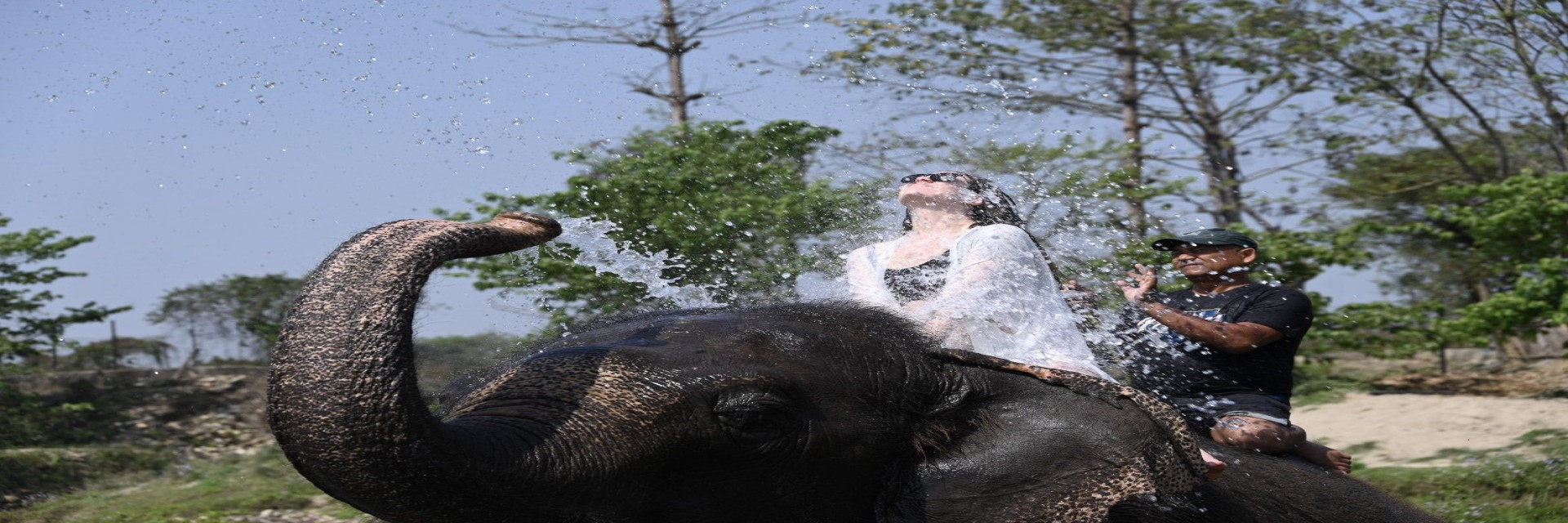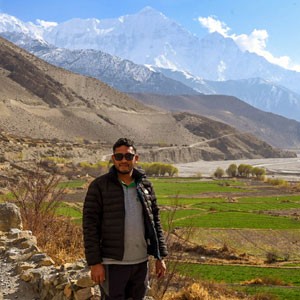A jungle safari is one of the greatest ways to discover Nepal's diverse flora and fauna. Nepal's environment is unusual since it is located in three distinct geographic regions: the mountains, the hills, and the lowlands (terai). In addition to the stunning mountain trekking and wild white-water rafting that the nation provides, Nepal is known for its abundant biodiversity, and you can go on an exhilarating jungle safari there. When you engage in jungle safari activities in Nepal, it is an incredible experience. A jungle safari is a wonderful way to relax after a day of trekking in Nepal.
Nepal has a total of 11 national parks, three conservation areas and three wildlife reserves. Most of them have lush tropical jungles teeming with rare birds and other types of flora. You can either drive a four-wheeler or ride on the back of an elephant to view wildlife and their habitats. Canoeing or bird watching are your options. The most remarkable nature treks, village tours, cultural expeditions, bird-watching excursions, and so forth are unquestionably yours to enjoy. Nepal is home to both vegetation and animals. Several national parks in Nepal have managed to conserve this magnificent natural legacy. Over 19% of the total area of Nepal has been occupied by these protected areas. Chitwan National Park, Bardia National Park, Khaptad National Park, Parsa National Park, and Koshi Tappu Wildlife Reserve are the first choices among the visitors, and they provide the best jungle safari in Nepal.
Chitwan National Park Safari
Chitwan National Park (932 sq km), the country's first national park, was established in 1973 and is situated in the central lowlands. Chitwan's neighbouring park, Parsa (499 sq km), was categorized in 1984. They extend into the Siwalik Hills, which are covered in chir pine and sal woods, and when combined they are made up of sal and revering forests as well as meadows. The tiger, leopard, Indian rhinoceros, and gaur are among the well-known large animals from Chitwan. Chitwan is home to 489 different bird species, more than any other protected area in Nepal. The park is home to around 50 different species of mammals, 525 different bird species, and 55 different reptile and amphibian species. The best time for the Chitwan National Park safari is the winter season. For safaris, elephant rides and Jeep rides are possible.
Parsa National Park Safari
In Nepal's centre south, in the inner lowland plains, is where the Parsa National Park is situated. Districts covered include Bara, Parsa, Makwanpur, and Chitwan. It has a unique geographic setting because of the Siwalik Hills that surround it. There are linkages between it and the southwest's Valmiki Tiger Reserve on Indian soil and the west's Chitwan National Park. The park and populated regions are separated by the Rapti River and the Siwalik Hills. In the east, it does link to the Hetauda-Birgunj motorway. Parsa National Park can be reached easily by car. The entrance gate may be found on the road that runs between Birgunj, Birtauda, and Kathmandu. Buses depart from Kathmandu. A six- to seven-hour journey is required.
Alternatively, a flight to Simara takes about 15 to 20 minutes, and from there, a 15-minute drive will get you to the park's administrative offices. Parsa National Park is also home to numerous species that are on the verge of extinction, such as Royal Bengal Tigers, wild Asian elephants, sloth bears, and leopards. There are numerous other species in the park, including the blue bull, sambar, hog deer, striped hyena, jungle cat, and palm civet.
Bardia National Park safari
The 968 square kilometre Bardia National Park is home to the well-known one-horned rhinoceros of Asia and the imperilled Royal Bengal tiger. The Bardia district, which is in Nepal's extreme west, is where the national park is located. The park is bordered on the west by the Karnali River and on the north by the Churia Range. The Babai Rivers are immediate across the park, providing ideal habitat for wildlife. The park is best explored during the temperate and dry seasons of fall, winter, and early summer. The park is situated in the Midwestern region of Nepal. It extends from the lowlands, where sal is plentiful, into the Siwalik Hills, where sal is stunted and where lovely forests and meadows may be found. Mammals include the tiger, swamp deer, and Indian rhinoceros, which were fairly recently introduced. There are many lowland forests in the region, and some species have Western quirks like the white-napped woodpecker. The most efficient way to reach the park is via Nepalgunj in the Banke District. It's easy to drive or take a plane to Nepalgunj from Kathmandu.
Khaptad National Park Safari
The isolated Khaptad National Park (225 sq km), which climbs to a height of 3100 m, is located in far western Nepal, south of the main Himalayan chain. Beautiful oak and rhododendron woods dominate the plateau's rolling coniferous forests, which are interspersed with grasslands. The great parrotbill and the satyr tragopan pheasant are just two of the numerous unusual bird species that may be seen here. The meadows are covered in a riot of blooms in the spring and summer. Khaptad is highly recognized throughout the country for its medicinal herbs.
224 different varieties of medicinal herbs live in the park, along with 270 different bird species. Many common bird species, such as the Impeyan pheasant, partridges, flycatchers, bulbuls, cuckoos, and eagles, can be found in the national park. Several different species of wildlife can be found in the park, including langur monkeys, barking deer, wild boar, ghoral, and Himalayan black bears.
Tribeni also serves as a site of pilgrimage on the route to the park's administrative centre. A celebration of Ganga Dashhara is held every Jestha Purnima in the historic temples that dot this area. Any mode of transportation—including air and ground travel—can get us there. Airlines offer daily flight service, and if you'd rather travel by bus or jeep from Kathmandu, those options are also accessible. Khaptad National Park is located 448 kilometres from Kathmandu.
Koshi Tappu Wildlife Safaris
The 175 sq. km. Koshi Tappu Wildlife Reserve is located in Eastern Nepal. The Koshi, Nepal's largest river, inspired the name of the reserve. Longer species of snakes, wild elephants, Gharial Crocodiles, reptiles, Baer's Pochards, Red-necked Falcons, Black-bellied Terns, Great Stone Plovers, Dusky Eagle Owls, Swamp Francolins, and Marsh Warblers can all be spotted there. Large ungulates, including the wild water buffalo, Bule Bull antelope, and hog deer, can be seen in Koshi Tappu. The park is home to 350 different bird species. The uncommon fishing cat and Smooth-coated otters are two members of the tiny wetland carnivore. The Koshi River contains a small population of endangered Gangetic Dolphins. Furthermore, it is an ideal place for bird-watching as the land is made up of several marshes and water holes. The Asian buffalo population is supported by the grasslands.
Conclusion
Exploring different places, countries, and cultures has become one of the most popular activities among people all over the world. People prefer adventurous treks, adventurous safaris, adventurous climbing and mountaineering, and adventurous research. Humans have very little time to appreciate the beauty of nature and the natural world. But we all know how it feels to be in such a beautiful part of the world, full of natural wonders. Nepal's national parks are spectacular. They have protected many endangered animal species that are uncommon in other parts of the world. Among them are one-horned rhinos, Asiatic elephants, and the Royal Bengal Tiger. You can see these rare animals in Nepal's forest by taking an elephant ride. These national parks should not be missed if you are planning a trip to Nepal.

